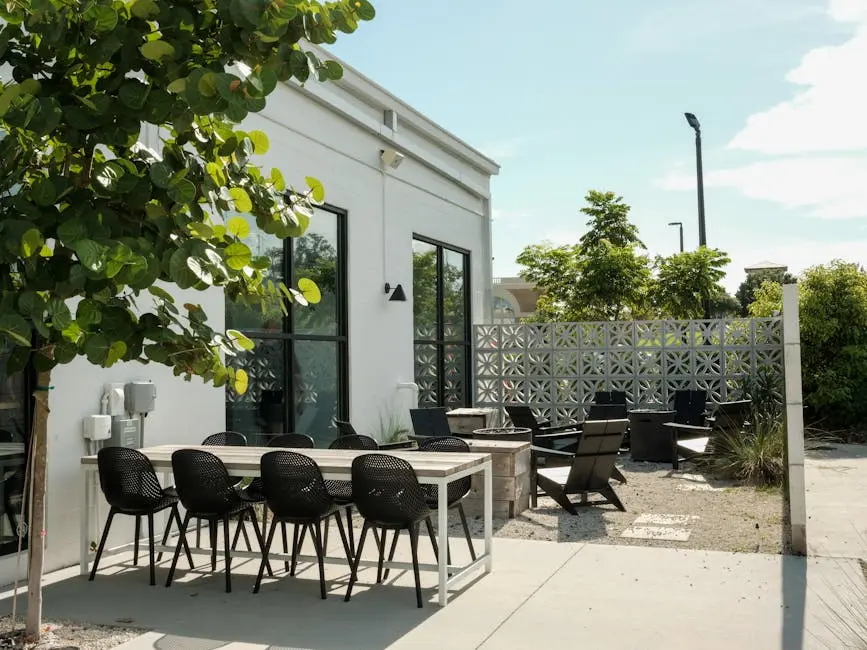How Commercial Landscaping Transforms Outdoor Spaces
When it comes to enhancing the appeal and functionality of outdoor spaces, commercial landscaping plays a pivotal role. From bustling business parks to serene garden settings, a well-executed landscape design can make all the difference. In this blog, we explore how commercial landscaping transforms outdoor areas into vibrant, usable extensions of indoor environments.
The Role of Commercial Landscaping in Modern Spaces
Commercial landscaping goes beyond mere beautification; it serves as a crucial component of modern space planning. By integrating nature with architecture, it enhances the overall ambiance, making spaces more inviting and comfortable for visitors and occupants alike. The presence of lush greenery and vibrant blooms can invoke a sense of tranquility and calm, even in the most urban of settings. Landscaped areas become not only visual assets but also spaces for social interactions, fostering community and collaboration.
In business environments, commercial landscaping can be particularly transformative. Imagine a corporate courtyard where employees can gather for lunch breaks or informal meetings in a natural setting. This access to green spaces can improve job satisfaction and worker productivity by providing mental respite and a change of scenery. Moreover, studies indicate that employees with access to nature at work report higher levels of creativity and job satisfaction, leading companies to increasingly value landscape enhancements as part of their corporate culture.
Designing Functional Landscapes for Productivity and Relaxation
A well-thought-out landscape design can contribute significantly to the productivity and relaxation of individuals. Whether it's an office courtyard designed for informal meetings or a park area meant for relaxation, each element is purposefully chosen to support the intended use. Take for example commercial spaces featuring pathways lined with fragrant flowers or subtle lighting to enhance safety and aesthetics. It's all about creating a balance between beauty and functionality. Plants aren't just for decoration; they play a pivotal role in noise reduction and air purification as well.
Landscape architects often leverage the green space to create a strategic layout that maximizes the potential usage of an area. For instance, seating areas surrounded by shade trees provide refuge from the sun, encouraging outdoor break times and enhancing employee productivity. In contrast, open lawns might be intended for larger gatherings or team-building exercises. Furthermore, the inclusion of water features, such as fountains or ponds, can add an element of serenity while also serving functional purposes, such as stormwater management.
Designing functional landscapes is not only about current usability but also about future adaptability. Landscapes designed with flexibility in mind can host a variety of events or adapt to changing needs over time, thus providing continual value to their users. Commercial landscapes that offer versatile spaces can accommodate everything from pop-up markets to corporate events, making them an integral part of urban planning and development strategies.
Sustainability in Commercial Landscaping
Incorporating sustainable practices into commercial landscaping helps reduce environmental impact. This includes using native plants, implementing efficient water management systems, and creating habitats that support local wildlife, all of which are crucial for long-term environmental stewardship. Native plants, for instance, require less water and maintenance, aligning perfectly with eco-friendly landscaping goals. By choosing flora that thrives in local conditions, businesses can significantly cut down on water use and ongoing maintenance costs.
Efficient water management is another critical component of sustainable commercial landscaping. Systems such as drip irrigation or rainwater harvesting not only conserve water but also ensure optimal plant growth. These methods reduce runoff, preventing soil erosion and waterway pollution. By using mulch and other materials to retain soil moisture, landscapes can remain lush and vibrant with minimal water waste.
The ecological benefits extend beyond conserving resources. Sustainable landscapes often become havens for wildlife, supporting biodiversity by providing habitats for birds, insects, and other local fauna. This contribution to the ecosystem boosts natural resilience and interconnectivity, promoting a balance that benefits both the environment and commercial establishments. Encouraging biodiversity in commercial landscapes also underscores a commitment to local conservation efforts, strengthening corporate social responsibility initiatives.
Enhancing Curb Appeal and Value
A well-designed landscape not only improves curb appeal but also significantly boosts property value. For businesses, this means attracting more customers and creating a welcoming atmosphere that highlights their brand's identity and values. First impressions matter, and the exterior space is often the first interaction a visitor has with a property. As per estimates in the Mastering Commercial Landscape Design blog, attractive landscapes are more likely to draw in potential clients and partners, making them a worthwhile investment for any establishment.
Moreover, elegantly landscaped areas yield a high return on investment by increasing the desirability of a property. Well-maintained green spaces have been shown to add a significant percentage to property values, sometimes even comparable to kitchen or bathroom renovations. This fact is becoming more recognized as businesses compete to establish a memorable presence in the marketplace. Notably, landscape enhancements that align with sustainable practices gain additional value by demonstrating corporate responsibility, which is highly valued among modern consumers.
Curb appeal isn't solely about visual aesthetics—it's about creating an inviting entrance that encourages interaction and engagement. Incorporating elements like seating areas, sculptures, or even outdoor art installations can enhance the user experience and create a unique identity. For example, businesses that install a cohesive and immersive landscape design can see a tangible increase in customer engagement and brand loyalty.
The Impact of Thoughtful Landscaping
In conclusion, commercial landscaping is not just about aesthetics; it's about creating an environment that enhances well-being, supports sustainability, and invites interaction. Whether it's for businesses, public spaces, or residential communities, the right landscaping can transform outdoor areas into beautiful, functional havens.

